Conceptual Mathematics, 2nd Edition
In the last 60 years, the use of the notion of category has led to a remarkable unification and simplification of mathematics. Conceptual Mathematics introduces this tool for the learning, development, and use of mathematics, to beginning students and general readers, but also to practicing mathematical scientists. This book provides a skeleton key, making explicit some concepts and procedures that are common to all branches of pure and applied mathematics.
The treatment does not presuppose knowledge of specific fields, but rather develops, from basic definitions, such elementary categories as discrete dynamical systems and directed graphs; the fundamental ideas are then illuminated by examples in these categories.
This second edition provides links with more advanced topics of possible study. In the new appendices and annotated bibliography the reader will find concise introductions to adjoint functors and geometrical structures, as well as sketches of relevant historical developments.
Conceptual Mathematics,
2nd Edition
A first introduction to categories

F. WILLIAM LAWVERE
SUNY at Buffalo
STEPHEN H. SCHANUEL
SUNY at Buffalo

CAMBRIDGE UNIVERSITY PRESS
Cambridge, New York, Melbourne, Madrid, Cape Town, Singapore, So Paulo, Delhi, Mexico City
Cambridge University Press
The Edinburgh Building, Cambridge CB2 8RU, UK
www.cambridge.org
Information on this title: www.cambridge.org/9780521894852
This edition Cambridge University Press 2009
This publication is in copyright. Subject to statutory exception and to the provisions of relevant collective licensing agreements, no reproduction of any part may take place without the written permission of Cambridge University Press.
First published 1997
Second edition 2009
3rd printing 2012
Printed and bound by MPG Books Group, UK
A catalog record for this publication is available from the British Library.
Library of Congress Cataloging in Publication Data
Lawvere, F.W.
Conceptual mathematics : a first introduction to categories / F. William Lawvere, Stephen H. Schanuel. 2nd ed.
p. cm.
Includes index.
ISBN 978-0-521-71916-2 (pbk.) ISBN 978-0-521-89485-2 (hardback)
1. Categories (Mathematics) I. Schanuel, S. H. (Stephen Hoel), 1933 II. Title.
QA169.L355 2008
512.62dc22 2007043671
ISBN 978-0-521-89485-2 Hardback
ISBN 978-0-521-71916-2 Paperback
Cambridge University Press has no responsibility for the persistence oraccuracy of URLs for external or third-party Internet Websites referred to in this publication and does not guarantee that any content on such websites is, or will remain, accurate or appropriate.
to Fatima
Contents
1 The standard map
AB1+ AB2 A (B1+ B2)
A (B1+ B2)
Preface
Since its first introduction over 60 years ago, the concept of category has been increasingly employed in all branches of mathematics, especially in studies where the relationship between different branches is of importance. The categorical ideas arose originally from the study of a relationship between geometry and algebra; the fundamental simplicity of these ideas soon made possible their broader application.
The categorical concepts are latent in elementary mathematics; making them more explicit helps us to go beyond elementary algebra into more advanced mathematical sciences. Before the appearance of the first edition of this book, their simplicity was accessible only through graduate-level textbooks, because the available examples involved topics such as modules and topological spaces.
Our solution to that dilemma was to develop from the basics the concepts of directed graph and of discrete dynamical system, which are mathematical structures of wide importance that are nevertheless accessible to any interested high-school student. As the book progresses, the relationships between those structures exemplify the elementary ideas of category. Rather remarkably, even some detailed features of graphs and of discrete dynamical systems turn out to be shared by other categories that are more continuous, e.g. those whose maps are described by partial differential equations.
Many readers of the first edition have expressed their wish for more detailed indication of the links between the elementary categorical material and more advanced applications. This second edition addresses that request by providing two new articles and four appendices. A new article introduces the notion of connected component, which is fundamental to the qualitative leaps studied in elementary graph theory and in advanced topology; the introduction of this notion forces the recognition of the role of functors.
The appendices use examples from the text to sketch the role of adjoint functors in guiding mathematical constructions. Although these condensed appendices cannot substitute for a more detailed study of advanced topics, they will enable the student, armed with what has been learned from the text, to approach such study with greater understanding.
Buffalo, January 8, 2009 | F. William Lawvere
Stephen H. Schanuel |
Organization of the book
The reader needs to be aware that this book has two very different kinds of chapters:
The Articles form the backbone of the book; they roughly correspond to the written material given to our students the first time we taught the course.
The Sessions, reflecting the informal classroom discussions, provide additional examples and exercises. Students who had difficulties with some of the exercises in the Articles could often solve them after the ensuing Sessions. We have tried in the Sessions to preserve the atmosphere (and even the names of the students) of that first class. The more experienced reader could gain an overview by reading only the Articles, but would miss out on many illuminating examples and perspectives.
is intended to give the reader a taste of more sophisticated applications; mastery of it is not essential for the rest of the book.
Each Article is further discussed and elaborated in the specific subsequent Sessions indicated below:
The Appendices, written in a less leisurely manner, are intended to provide a rapid summary of some of the main possible links of the basic material of the course with various more advanced developments of modern mathematics.
Acknowledgements
First Edition
This book would not have come about without the invaluable assistance of many people:
Emilio Faro, whose idea it was to include the dialogues with the students in his masterful record of the lectures, his transcriptions of which grew into the Sessions; Danilo Lawvere, whose imaginative and efficient work played a key role in bringing this book to its current form;
our students (some of whom still make their appearance in the book), whose efforts and questions contributed to shaping it;
John Thorpe, who accepted our proposal that a foundation for discrete mathematics and continuous mathematics could constitute an appropriate course for beginners.
Special thanks go to Alberto Peruzzi, who provided invaluable expert criticism and much encouragement. Many helpful comments were contributed by John Bell, David Benson, Andreas Blass, Aurelio Carboni, John Corcoran, Bill Faris, Emilio Faro, Elaine Landry, Fred Linton, Saunders Mac Lane, Kazem Mahdavi, Mara Mondolfo, Koji Nakatogawa, Ivonne Pallares, Norm Severo, and Don Schack, as well as by many other friends and colleagues. We are grateful also to Cambridge University Press, in particular to Roger Astley and Maureen Storey, for all their work in producing this book.
Next page
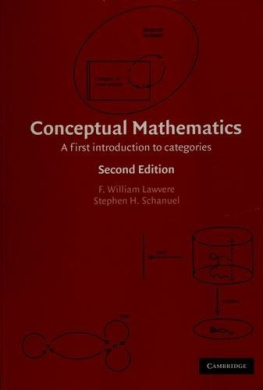

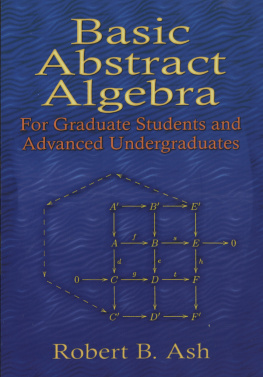
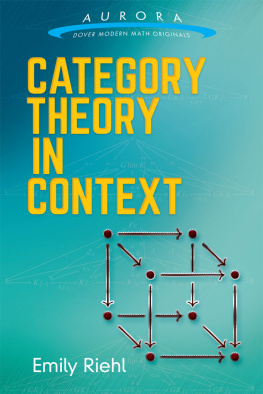
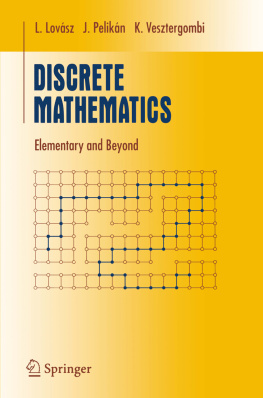

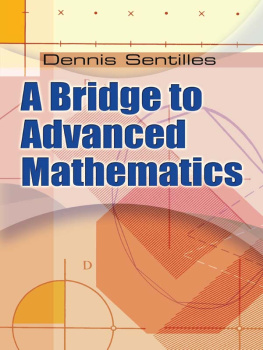
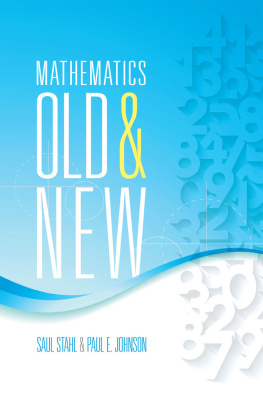
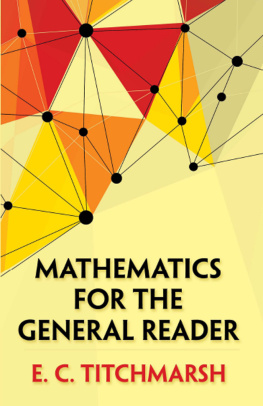
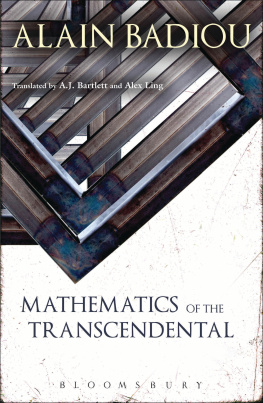




 A (B1+ B2)
A (B1+ B2)